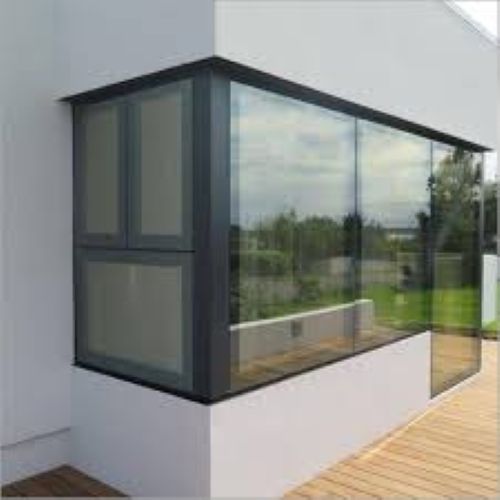Eco-friendly techniques to enhance interiors with modern glass

Dinesh Chandra Pandey
Sustainability is becoming a key factor in interior design as more homeowners and businesses seek eco-friendly solutions. Modern glass is emerging as a versatile material that not only enhances aesthetics but also promotes energy efficiency and sustainability. Whether used for natural lighting, insulation, or as a recyclable material, glass plays a crucial role in green building practices. By incorporating eco-friendly techniques, interiors can be transformed into stylish, energy-efficient, and environmentally responsible spaces.
Wired Glass
This glass is known for its soundproofing and light transmission properties and is typically used for safety and fire resistance. It can be integrated into partition walls or skylights for a vintage industrial look while maintaining security. Modern versions of wired glass have laminated layers that improve insulation and reduce heat loss.
Coater Glass
This glass is known for its elegance and warmth which features coatings that enhance thermal insulation and UV protection. It is used for facades, windows, and partitions to improve indoor temperature regulation. It also reduces energy consumption by limiting heat transfer.
Low-E (Low Emissivity) Glass
This glass is used for energy efficiency by minimizing heating and cooling costs. Its microscopically thin coating reflects heat while allowing light transmission. It is ideal for windows and large glass walls in sustainable buildings. It keeps rooms warm in winter and cool in summer.
Solar Control Glass
This glass reduces heat and glass glare which reduces solar heat gain while maintaining natural light entry. It is used in skylights, glass facades, and balconies to maintain a comfortable indoor climate. Also, it prevents furniture and flooring from fading due to UV exposure.
Multi-functional Glass
This glass combines properties like UV protection, thermal insulation, and noise reduction which are commonly used in smart windows with switchable transparency. It helps to enhance sustainability by reducing artificial lighting and temperature control needs.
Toughened Glass (Tempered Glass)
This glass is hard to break as it is stronger and safer than regular glass, reducing breakage risks. It is ideal for glass partitions, doors, staircases, and furniture. It can be combined with coatings for additional insulation benefits.
Insulated Glass (Double/Triple Glazed Glass)
This glass adds glory to one’s room or house as it features multiple glass panes separated by gas-filled spaces for superior insulation. It is used in energy-efficient windows to minimize heat loss and sound transmission. It has a lower reliance on heating and cooling systems.
Heat Strengthened Glass
This glass is known for its versatility and durability as it is a semi-tempered glass with improved resistance to thermal stress. It is suitable for exterior glazing, skylights, and areas with high-temperature variations. It reduces the risk of spontaneous breakage compared to regular glass.
Acoustic and Soundproofing Benefits of Glass
Creating a sustainable interior also involves comfort and modern acoustic glass plays a key role in soundproofing spaces. Laminated acoustic glass is designed to reduce external noise, making it ideal for homes and offices in busy urban areas. Double-glazed soundproof windows further enhance indoor tranquility while maintaining energy efficiency. By minimizing noise pollution, these glass solutions improve the quality of life and contribute to a healthier living environment.
Smart and Self-Cleaning Glass for Low Maintenance
Advancements in glass technology have introduced self-cleaning and smart glass, which enhance eco-friendliness. Self-cleaning glass has a special coating that breaks down dirt and allows rainwater to be washed away, reducing the need for chemical cleaning agents. Smart glass can switch between transparent and opaque states, eliminating the need for curtains and blinds, which require regular maintenance and replacement. These innovations not only save time and resources but also reduce the environmental impact of cleaning and maintenance activities.
Eco-Friendly Applications in Modern Interiors
Modern glass has evolved beyond its decorative purpose, becoming a crucial element in sustainable interior design. By incorporating energy-efficient glass, maximizing natural light, and utilizing recycled materials, interiors can minimize their ecological footprint without sacrificing style. Smart glass partitions, greenhouse-inspired interiors with insulated glass, and sustainable glass furniture made from recycled content are just a few examples of innovative applications. Furthermore, glass contributes to improved indoor air quality, acoustic comfort, and energy savings, making it a top choice for environmentally conscious homeowners and businesses. As demand for green building solutions grows, modern glass continues to pioneer sustainable innovation, shaping the future of interior design.
Dinesh Chandra Pandey is Founder of Shankar Fenestrations and Glasses

